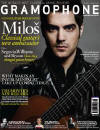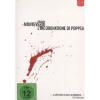Texte paru dans: / Appeared in:
*

GRAMOPHONE (06/2012)
Pour s'abonner /
Subscription information
EuroArts
EA2058928

0880242589286
Reviewer: Richard Lawrence
Tandberg’s bloodbath — Incoronazione in Oslo
Monteverdi’s last opera is renowned for two particular features: the principal characters are drawn from history rather than legend, and the story celebrates - there’s no other word — the triumph of vice over virtue. Egged on by Poppea, Nero orders Seneca to kill himself; Ottavia is banished, as is Ottone, Poppea’s former lover, Poppea succeeds Ottavia as Nero’s empress. Amorous and petulant, amorous and scheming respectively, Nero and Poppea are deeply unattractive. Their characterisation in music is drawn quite miraculously, and Monteverdi is equally unerring in his portrayal of Ottone’s jealousy and Ottavia’s bitterness. Nobody commands the audience’s sympathy except, possibly, Seneca: even the lovelorn Drusilla rejoices at the prospect of her rival Poppea’s murder.
How best to depict these grotesques for a 21st-century audience? Ole Anders Tandberg’s solution is to put them in modern dress and to have them indulge in what the booklet-note calls ‘frequent lashings of blood and sex’. The colours are black and white, with slashes of red lipstick as for the blood, for lashings read buckets. Jacek Laszczkowski plays Nero brilliantly as a complete psychopath but Tandberg goes way over the top. The most revolting scene is the duet where Nero and Lucano celebrate — that word again! — the death of Seneca. The old man’s corpse is on the stage, and not only do they wallow in his blood but Lucan does unspeakable things to the body (unfeasible and, given that Seneca was his uncle, unlikely).
Tandberg introduces more deaths at the end. After telling Ottone that he can live, Nero shoots him in the back. Ottavia stabs her nurse, then herself. During the ravishing final duet, the four consuls and tribunes (who have been deprived of their ensemble) are inexplicably murdered by Nero and Poppea, as is Arnalta. The stage is littered with as many bodies as in a jacobean tragedy.
You are hardly going to buy this for the singing but, for what it’s worth, the best is from Tim Mead and Patricia Bardon. Monteverdi’s scoring has been enhanced, not too offensively. The filming — often from above — is excellent. But you have been warned.
Cliquez l'un ou l'autre
bouton pour découvrir bien d'autres critiques de CD
Click either button for many other reviews


